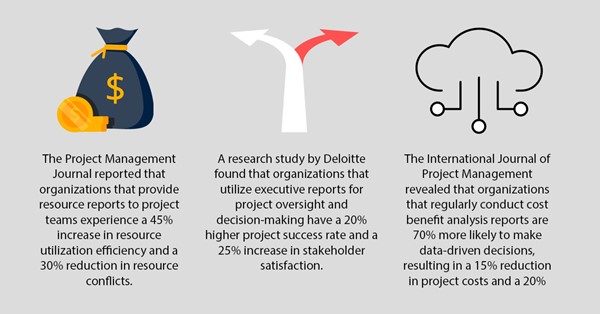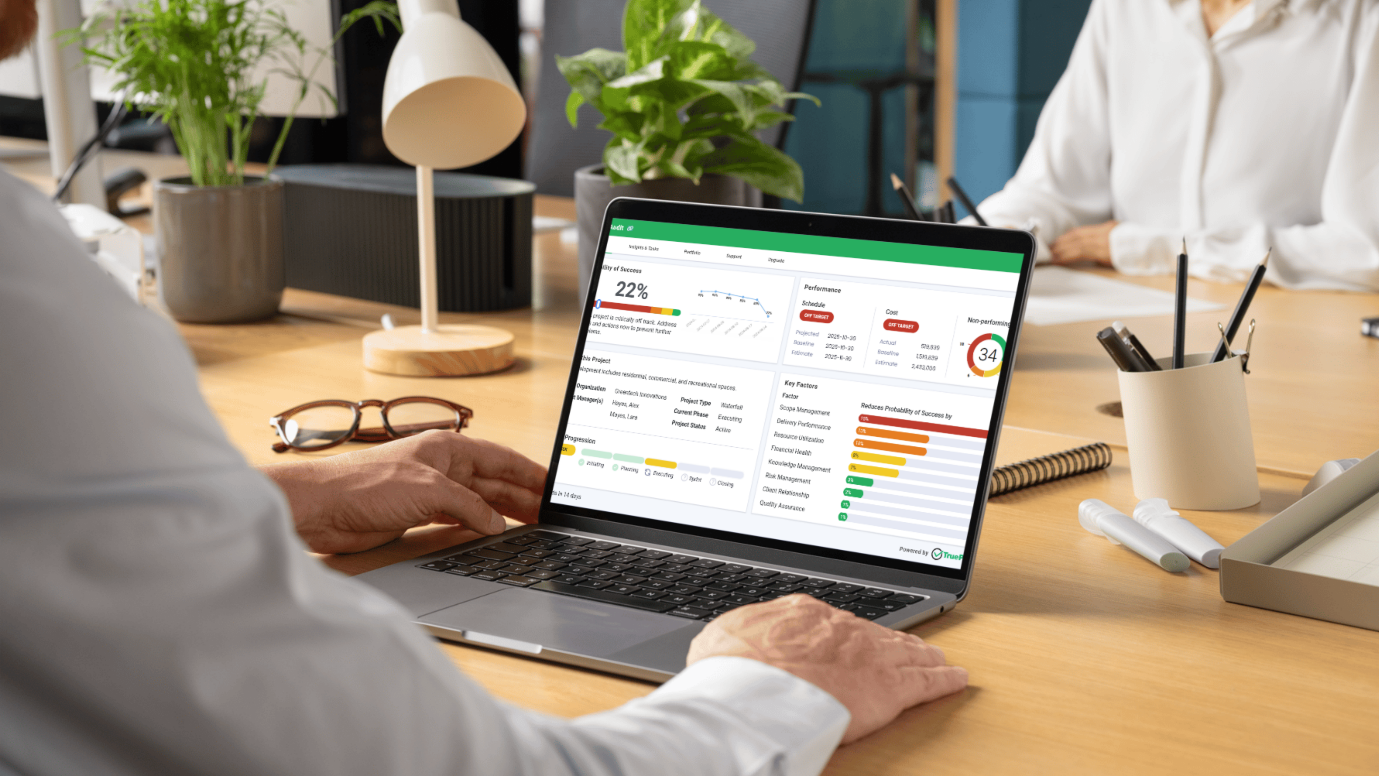
In the fast-paced and ever-evolving world of project management, the significance of project reports cannot be overstated. These comprehensive documents play a pivotal role in keeping stakeholders informed, tracking progress, and ensuring project success. A well-crafted project report is a window into the project's health, providing valuable insights into its performance, challenges, and achievements. Are you ready to harness the full potential of project reports to drive successful project outcomes? This article will explore the ins and outs of project reports, revealing how they can significantly impact project success. Besides, you will also learn more about the importance, characteristics, and effective methods to improve your project reports.
What is a Project Report? Unraveling the Essentials
At its core, a project report is a comprehensive and structured document that provides a detailed overview of a project's status, progress, and performance. It serves as a critical communication tool for stakeholders, enabling them to gain valuable insights into project development and make informed decisions. According to a survey by Project Smart, 75% of project managers agreed that risk reports play a crucial role in identifying and managing potential risks, ultimately leading to better project performance. Project reports are not only vital for keeping project teams and stakeholders informed but also serve as historical records that aid in post-project analysis and learning.
The Objectives and Cruciality of Project Reports
The primary objective of project reports is to provide a clear picture of project progress, challenges, and achievements. They act as a roadmap that guides project managers and stakeholders towards the project's successful completion. By presenting data in a concise and understandable manner, project reports facilitate effective decision-making, leading to optimized resource allocation and timely risk mitigation.
A study by the Project Management Institute (PMI) revealed that organizations that utilize progress reports regularly are 60% more likely to achieve project objectives and deliver successful outcomes. They empower stakeholders to identify potential bottlenecks, measure project performance against key milestones, and make data-driven choices to ensure project success.

"A project report is like a roadmap that guides project teams through the twists and turns of project complexities, helping them reach their destination successfully."
- Zig Ziglar, Motivational Speaker and Sales Expert
Unveiling the Characteristics of an Effective Project Report
The characteristics of an effective project report are crucial for ensuring its value and impact. Here's a detailed elaboration on each characteristic:
- Scope: The project report must clearly define the project's scope and objectives. It should outline the project's purpose, deliverables, and boundaries, providing a comprehensive understanding of what the project aims to achieve. A well-defined scope helps stakeholders set realistic expectations and ensures that the project remains focused on its intended outcomes.
- Resource: Effective project reports include detailed information about resource allocation and utilization. This encompasses manpower, budget, equipment, and any other resources necessary for project execution. By presenting resource allocation data, project managers can ensure that resources are optimally utilized, preventing overutilization or wastage.
- Time: Timelines and milestones are critical elements in project reports. A clear presentation of project schedules, deadlines, and key milestones allows stakeholders to monitor progress against the established timelines. This helps identify potential delays and enables timely course corrections to keep the project on track.
- Quality: Quality assurance is a fundamental aspect of project management. An effective project report includes information on quality standards, processes, and measures implemented to ensure that deliverables meet or exceed expectations. By highlighting quality control measures, project teams can maintain high standards throughout the project's execution.
- Risk: Risks are inherent in any project, and an effective project report addresses risk management. It identifies potential risks that may impact the project and outlines risk mitigation strategies to minimize their impact. By proactively managing risks, project managers can prevent costly disruptions and enhance project success.
By incorporating these characteristics into project reports, project managers can create documents that provide a holistic view of the project's progress, challenges, and achievements. A well-crafted project report facilitates effective decision-making, promotes transparency, and fosters collaboration among project stakeholders. It acts as a reliable reference for project analysis, lessons learned, and future planning, contributing significantly to the overall success of the project.
"A project report is more than just data and charts; it is a narrative that captures the essence of the project's achievements and challenges, enabling stakeholders to make informed decisions."
- Sheryl Sandberg, Chief Operating Officer of Facebook
The Spectrum of Project Reports: A Diverse Range
There are various types of project reports, each serving a specific purpose in project management. Here's a detailed elaboration of the most common types of project reports:
- Status Reports: Status reports are regular updates on the progress of a project. They provide a snapshot of the project's current status, including completed tasks, ongoing activities, and any pending work. Status reports typically include key performance indicators (KPIs) and metrics to assess project health. They help project stakeholders stay informed about the project's progress and identify any potential issues or risks.
- Progress Reports: Progress reports are similar to status reports, but they focus more on the accomplishments and milestones achieved during a specific period. They outline the progress made towards project objectives and provide a detailed overview of completed tasks. Progress reports often include a comparison of planned vs. actual progress, helping stakeholders assess project performance.
- Risk Reports: Risk reports focus on identifying, analyzing, and managing project risks. They list potential risks, their likelihood, and their potential impact on the project. Risk reports also outline the strategies and actions taken to mitigate or address these risks. By providing a comprehensive risk assessment, stakeholders can make informed decisions to safeguard the project's success.
- Executive Reports: Executive reports are high-level summaries of project performance designed for senior management and key stakeholders. They highlight the project's overall status, major achievements, and critical challenges. Executive reports focus on providing strategic insights to help decision-makers understand the project's alignment with organizational goals.
- Cost-Benefit Analysis (CBA) Reports: CBA reports assess the costs and benefits of a project to determine its economic viability. They weigh the project's potential benefits against its costs to evaluate whether the investment is justified. CBA reports help stakeholders make informed financial decisions and prioritize projects based on their potential returns.
- Resource Reports: Resource reports provide an overview of resource allocation and utilization throughout the project. They include details about human resources, equipment, materials, and budget allocation. Resource reports help project managers ensure optimal resource distribution and identify potential resource constraints.
- Variance Reports: Variance reports compare planned project performance against actual performance. They highlight any deviations from the initial project plan and analyze the reasons behind these variances. Variance reports allow project teams to identify potential issues early and take corrective actions to bring the project back on track.
- Gap Analysis Reports: Gap analysis reports compare the current project performance with the desired performance or industry standards. They identify gaps or disparities that need to be addressed to achieve the project's objectives. Gap analysis reports aid in setting realistic project goals and strategies for improvement.
By tailoring the type of project reports to the needs of stakeholders, project managers can ensure effective communication, promote transparency, and drive successful project outcomes. Each type of report serves a unique role in project management by facilitating decision-making and fostering collaboration among project stakeholders.
Crafting an Effective Project Report: Step-by-Step
- Define Objectives: Clearly outline the purpose and scope of the project report.
- Gather Data: Collect accurate and relevant data from reliable sources.
- Structure Information: Organize data logically and use visual aids to enhance comprehension.
- Present Succinctly: Keep the report concise and to the point, avoiding unnecessary jargon.
- Analyze and Interpret: Analyze data to provide valuable insights and interpretations.
- Communicate Clearly: Use simple language to ensure the report is easily understood.
- Seek Feedback: Get input from stakeholders to improve the report's relevance and impact.
In conclusion, project reports play a pivotal role in the success of any project. They serve as comprehensive documentation of the project's progress, challenges, and achievements, providing valuable insights to stakeholders and project managers alike. A well-crafted project report is not just a mere formality but a powerful communication tool that fosters transparency, accountability, and collaboration. A project report should encompass various elements, including scope, resources, time, quality, and risk, to provide a holistic view of the project's status and performance.
Project management software, such as TrueProject, significantly improves project reports by streamlining data collection, analysis, and presentation. TrueProject offers built-in reporting and data analysis features. These tools can automatically process the collected data and generate insightful reports, including charts, graphs, and trends, without requiring manual data manipulation. Furthermore, it can track a wide range of performance metrics, such as task completion rates, resource utilization, project milestones achieved, and budget variance.
 About the Author:
About the Author:
Brian Eckert is the Director of Engineering for TrueProject. Brian has 30+ years of experience in software development and processes. He specializes in Requirements Analysis, Software Project Management, and SDLC.
Endnotes:
- Association for Project Management (APM). (2019). Conditions for Project Success. https://www.apm.org.uk/resources/find-a-resource/conditions-for-project-success/
- Quirk, Peta. Transform Magazine. (2022). Genuine Transformation Requires Genuine Stakeholder Engagement. https://www.transformmagazine.net/articles/2022/genuine-transformation-requires-genuine-stakeholder-engagement/
- Naz, Zeshan. Knowledge Hut. Project Report: Objectives, Types, Use Cases, Templates (2023). https://www.knowledgehut.com/blog/project-management/project-report
- Indeed. What Is Project Reporting? (With Steps, Tips, and Benefits) (2022). https://ca.indeed.com/career-advice/career-development/project-reporting
- Landau, Peter. ProjectManager. 12 Essential Project Reports. (2023). https://www.projectmanager.com/blog/4-types-of-project-reports
- Syed, Imran. Sprintzeal. Project Report and its Significance in Project Management (2023). https://www.sprintzeal.com/blog/project-report





